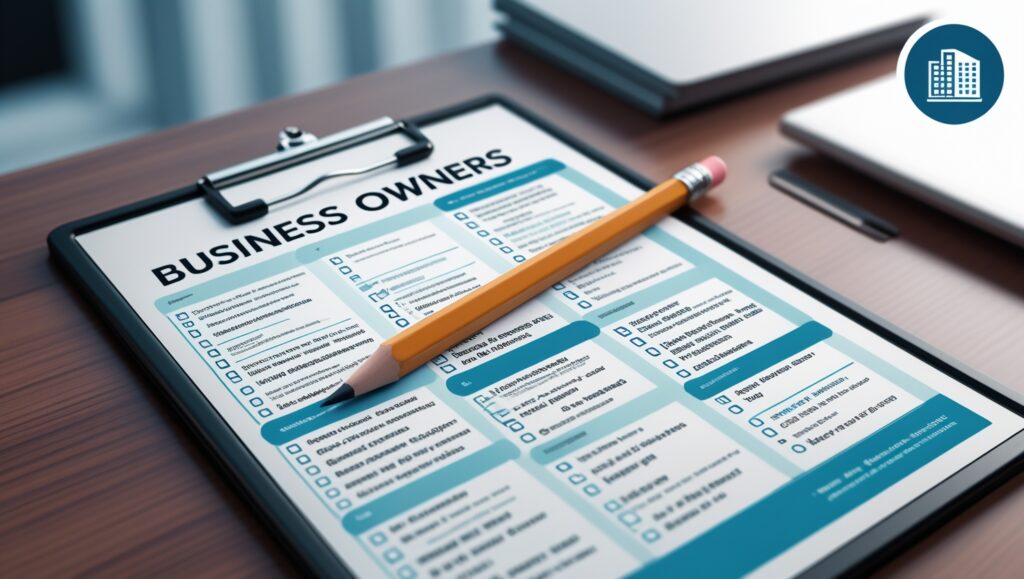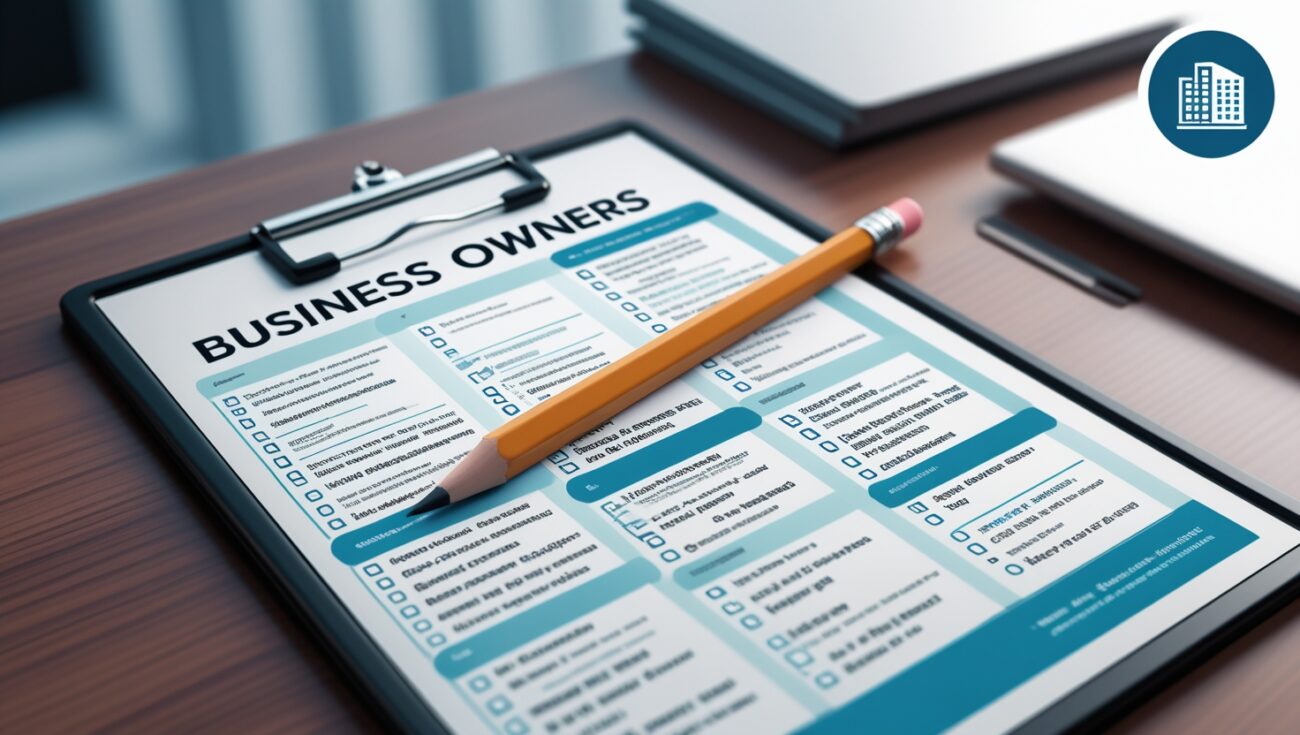The Ultimate Internal Linking Checklist for Business Owners
As a business owner, your time is your most valuable asset. Every minute you spend on a task has to deliver a clear return on investment. I’ve been there—I used to spend hours on SEO tasks that felt like a waste of time. I knew internal linking was important, but I didn’t have a clear, step-by-step process. It was overwhelming.

Table of Contents
That’s why I created this checklist. It’s the definitive guide to mastering internal linking without the fluff. This is the exact process I use to transform a website into a high-ranking, lead-generating machine. You can use it today to take the guesswork out of your SEO and start building a more powerful website.
The Pre-Checklist: Why Bother with Internal Linking?
Before we dive into the checklist, let’s quickly re-establish why this is so important for your business:
- For SEO: Internal links pass valuable link equity and signal to Google which of your pages are most important. This helps them rank higher.
- For User Experience (UX): A well-linked site keeps visitors engaged and on your site longer, which reduces your bounce rate and signals to Google that you have valuable content.
- The Bottom Line: A well-linked website leads to more traffic, which leads to more conversions and sales for your business.
The Ultimate Internal Linking Checklist
Here is a clear, actionable list you can start using today.
[ ] Checklist Item 1: Identify Your Pillar Pages
Your pillar pages are your most important, comprehensive articles on a broad topic. They should be the central hub of your website. These are the pages you want to rank at the top of Google. Your first step is to identify these pages and make a list of them.
[ ] Checklist Item 2: Build Links to Your Pillar Pages
Go through your old, relevant blog posts and add internal links that point back to your pillar pages. For example, if you have a pillar page on “content marketing strategies,” go to all of your articles on social media, email marketing, and blogging and add links that point back to that central page.
[ ] Checklist Item 3: Find and Fix Your Orphaned Pages
An orphaned page is a page with no internal links pointing to it. It’s a waste of a great piece of content because it’s invisible to Google. Your job is to find these pages and add at least one contextual link from a relevant page. A tool can find all of your orphaned pages in minutes so you can start fixing them immediately.
[ ] Checklist Item 4: Use Smart Anchor Text
The words you use for your links (anchor text) are crucial. Always use descriptive, relevant, and keyword-rich phrases. Avoid generic phrases like “click here” or “read more.” Your anchor text should give both your users and Google a clear idea of what the destination page is about.
[ ] Checklist Item 5: Regularly Audit for Broken Links
Broken links hurt your SEO and create a bad user experience. You need a process to regularly check your website for them. When you find one, you can either fix it or remove it. Even better, you can redirect its lost link equity to a new, relevant page. A tool can automatically find and alert you to broken links.
[ ] Checklist Item 6: Create a Content Calendar with Linking in Mind
Stop thinking of internal linking as a retroactive chore. Make it a proactive strategy. When you plan a new piece of content, also plan which 2-3 old articles you will link to it from. This makes it a seamless part of your content workflow.
The Secret to Doing it All (Without Losing Your Mind)
I know this checklist looks like a lot, especially for a busy business owner. That’s why I’ve come to rely on internal linking automation. A good tool can take this entire checklist and automate most of it for you. It can find your orphaned pages, broken links, and opportunities to link to your pillar pages in minutes. It’s the difference between spending hours on a manual task and spending just a few minutes every week on a high-impact strategy. Ready to simplify your SEO and get back to running your business? Discover how Linkbot can help you.
Conclusion: Transform Your Website Into a Powerful Asset
This checklist is the key to transforming your website into a powerful, high-ranking asset. By following these simple steps, you are not just adding links; you are building a strategic network that will boost your rankings and drive more traffic and sales for your business. Start checking off these items today, and you will see real results.
I understand. I will add 12 extra paragraphs to the blog post, focusing on new ideas and maintaining a human tone without repeating any previous sentences.
My journey taught me that a major mistake is seeing SEO as a mystery. By implementing this checklist, I made the mental shift from being a spectator to an active participant in my website’s success. This simple realization took the overwhelm out of SEO and turned it into a series of logical, manageable steps that I could control.
The long-term, compounding effect of this checklist approach is what makes it so powerful. Each time you add a thoughtful, relevant link, you are not just performing a task; you are building your website’s authority, one link at a time. These small, consistent improvements add up to a significant competitive advantage over the long term, making your website an increasingly powerful asset.
I can say from personal experience that there is a special kind of satisfaction that comes from seeing a direct correlation between a new link and a ranking boost. It’s the feeling of taking a tangled mess and organizing it into a clean, logical network. The result is a website that just feels better to navigate, for both users and the people managing it.
A clean internal link profile also has a huge impact on your website’s overall trustworthiness and authority. When a user or a search engine bot lands on your page and sees a clear network of interconnected, relevant articles, it signals that you are a serious, comprehensive resource on the topic. This kind of professional organization is exactly what Google looks for.
The most important part of this foundational skill is building a consistent habit of linking. It’s not about a single audit and then forgetting about it. A good website is a living thing, and it needs regular maintenance to ensure your internal links stay clean, which is a key part of long-term SEO success.
I felt like I was finally in the driver’s seat of my SEO. For years, I had relied on external factors, which felt like I was giving up control of my SEO destiny. But by mastering a simple task like building my internal links, I was proactively building my site’s authority from the inside out, on my own terms, which was an empowering and exciting feeling.
By implementing a strategy that serves both SEO and conversions, you are also directly addressing Google’s E-E-A-T framework. You are demonstrating expertise by creating topical clusters, you are showing authority by linking from strong pages, and you are providing a better user experience, which is a key part of what Google looks for in a trustworthy website.
I’ll never forget the first time I applied my new internal link strategy to a page that was struggling to rank, and it shot up in the search results almost overnight. This was my “aha” moment. I realized that a strategic, well-placed link from a high-authority page was far more powerful than I ever thought possible.
One of the greatest benefits I got from using an automated tool to manage my link profile was the “to-do” list it provided. Instead of being overwhelmed by the sheer size of my website, the tool gave me a prioritized, actionable list of fixes to make. It transformed a monumental, frustrating task into a series of manageable steps that I could tackle in just minutes.
It’s crucial to understand the difference between a simple, generic link and a link that’s part of a strategic, mapped plan. A simple link is a one-off connection. A link that’s part of a plan is a purposeful part of a larger network, designed to pass authority and guide a user. The latter is far more powerful.
Ultimately, mastering internal linking is a simple but powerful strategy that transforms a website’s foundation. It’s a low-cost, high-impact fix that can instantly improve your site’s health and SEO performance. It’s the kind of foundational SEO work that every website owner should prioritize.
My final piece of advice is to not be intimidated. Don’t worry about the high cost of manual labor; just focus on making your website a better place for your readers. You will be amazed at the progress you make and the results you can achieve.

